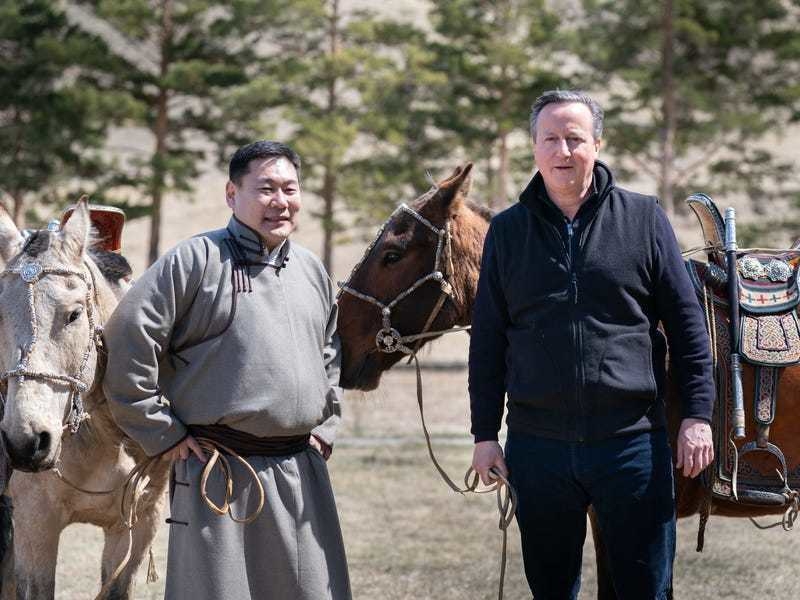The King has recycled royal coats of arms that decorated a chair used during King George VI’s coronation for his own enthronement.
After Charles is crowned he will move to a throne chair used by his grandfather and now re-upholstered but featuring the original embroidered coats of arms on the front and back that have been conserved.
The Queen Consort has an identical chair, used by the Queen Mother during George VI’s 1937 coronation, but her coats of arms have replaced those of the Queen Mother, having been newly embroidered by the Royal School of Needlework (RSN).

“So it’s giving the chairs I suppose a new life in a slightly different guise, but at the same time respecting that they are historic objects, and conserving them for the future.”
During the coronation service a succession of chairs will be used by the King, who will move from a chair of estate to sit in the ancient coronation chair to be crowned, and finally take his seat in the aptly named throne chair, for the enthronement and homage elements of the service.
The Queen Consort will also be seated in a chair of estate where she will be crowned and later take her place in a throne chair.
The chairs of estate, originally made for Queen Elizabeth and the Duke of Edinburgh to use during the late monarch’s 1953 coronation, have also been re-upholstered, and Charles and Camilla’s cyphers embroidered by the RSN to decorate the back rests.

From the back of the premises two staff members stripped the chairs, originally made by White, Allom & Company, back to their beech frames and built up the layers of wool covered by cotton and finally plush red silk velvet.
The sprung seats had new webbing stretched to support the springs and were built up with layers of wool, and finally red and gold braid and fringes were used for decoration.
Ian Block, who founded AT Cronin 35 years ago after training in upholstery, described how the original silk velvet on the chairs had disintegrated over their long lifetime.
He said: “Natural materials oxidise over time and turn to dust, they’re not going to pollute the earth – good for the environment – because they fade into nothing which is the nature of silk and cotton and wool.

Only one upholsterer was given the task of renovating a chair as their individual style, like a person’s “handwriting”, would have been noticed by experts in the trade, said Mr Block.
It is thought a new throne chair was made for the Queen to use during her 1953 coronation and two chairs of estate for the monarch and her husband, but Philip did not use his opting instead for another estate chair of a different design.
The matching 1953 chairs of estate were completely refurbished, by the Royal Household’s upholsterers, with new campari-coloured silk damask fabric – woven for the coronation – and Charles and Camilla’s cyphers embroidered by the RSN to decorate the back rests.
The RSN celebrated its 150th anniversary last year and its needlework skills have been used in five successive coronations from Edward VII’s crowning in 1902 to Charles’ coronation.
A core team of 10 from the school were supported by RSN graduates and trainees in creating the cyphers, which feature “cloth of gold” – a woven fabric with a metallic gold thread running through it.
A technique called “long and short shading” – coloured thread used to “paint with the needle” – was employed to give a three-dimensional effect to items like the jewels on the cyphers’ crowns.
The throne chairs and chairs of estate are from the Royal Collection which has overseen their restoration.
Also featured in Westminster Abbey will be 100 congregation chairs, made from sustainable British oak, covered in blue velvet with the King and Queen Consort’s cyphers, which will be sold after the coronation with the money donated to charity.






